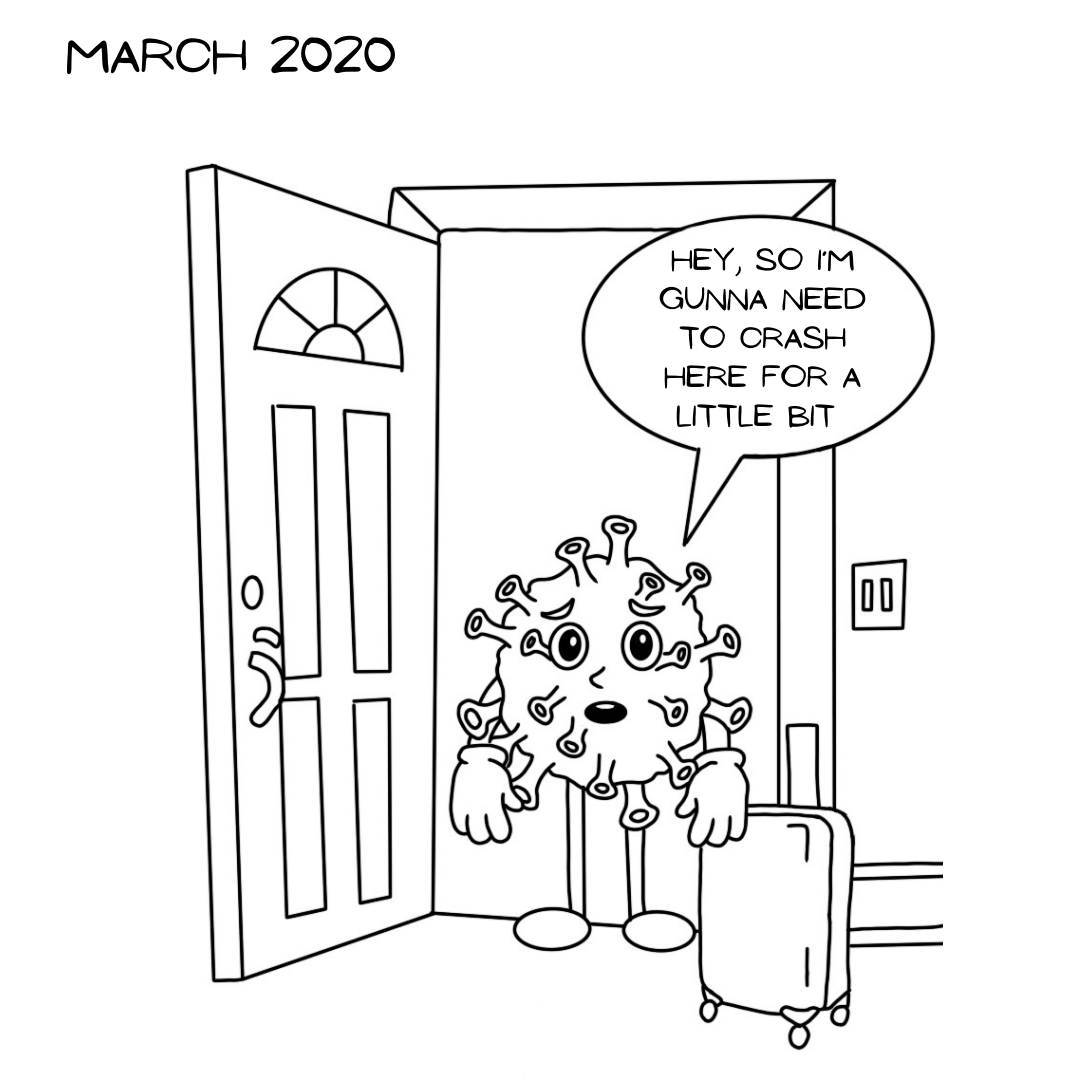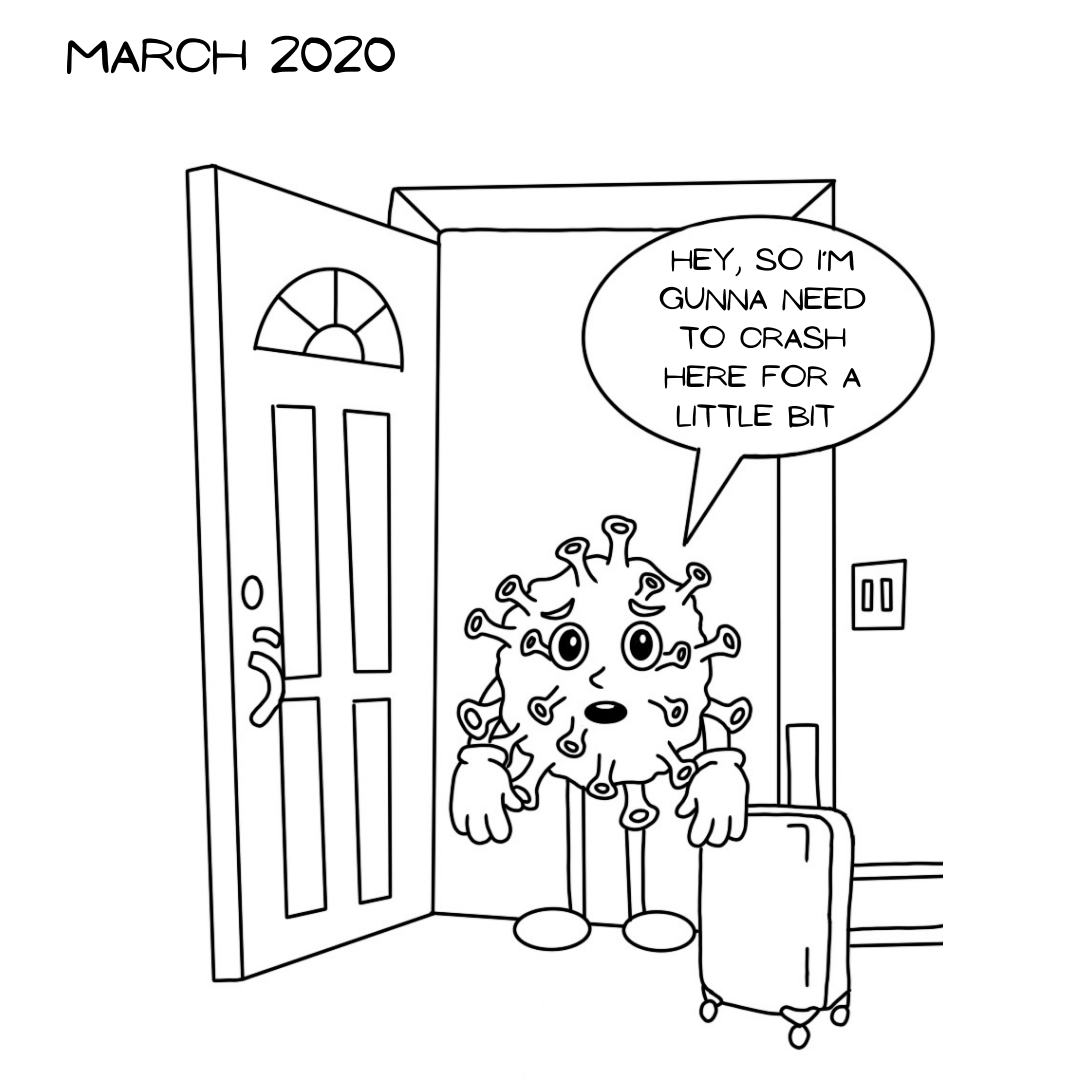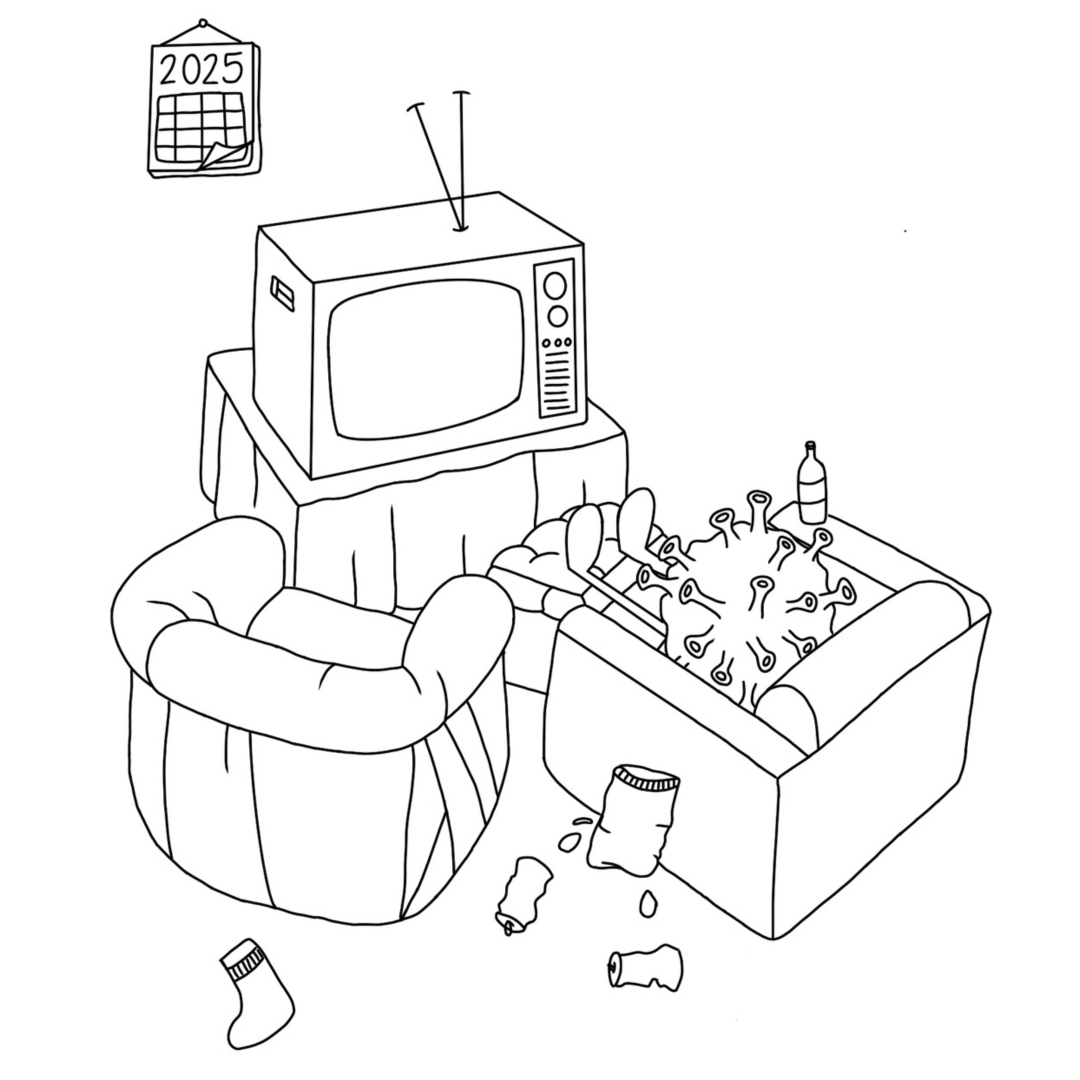COMIC BY: Kylie Rose Lawrence, Editor-in-Chief
It’s been almost two years since COVID-19 touched ground in the U.S. and nothing has been the same since. Social media, the news, classes – the discussion of when the pandemic will end is everywhere. But a new reality, one that everyone has been afraid of, may be upon us now. The World Health Organization has recently suggested that the Coronavirus will stick around for longer than we thought.
Executive Director of the WHO Emergencies Program, Dr. Mike Ryan, stated, “I think this virus is here to stay with us and it will evolve like influenza pandemic viruses, it will evolve to become one of the other viruses that affects us.”
After a rollercoaster of mask mandates and vaccinations, the news is unwelcomed to say the least. This pandemic has served as the leading cause for one of the worst mental health crises the world has ever seen; there’s been a global switch to online classes, devastating losses, and too much pressure put on healthcare workers. Throughout the pandemic, many people have asked the question: If the right protocols had been taken right at the beginning, would the pandemic be at the point it is now?
Maria Van Kerkhove, the WHO’s technical lead on COVID-19, stated, “We had a chance in the beginning of this pandemic. This pandemic did not need to be this bad.”
But how could anyone have known the right way to go? Nobody in the past century has seen anything quite like this virus. When the madness amidst lockdown first started, most people assumed the virus would die out relatively soon, as the Spanish flu of 1918 did. Nobody could have predicted that COVID-19 would be this deadly and last this long.
While it is suspected that the virus is here to stay, some sense of normalcy is likely to return. The seasonal cold and flu are considered “endemic,” meaning the viruses that cause them regularly circulate through individuals around the globe. The assumption among scientists is that COVID-19 will gradually become endemic as more people build immunity through vaccination, exposure, or infection, according to an article by Nature.
“The ultimate fate of a virus depends on how well it maintains its transmission. Generally speaking, viruses that are highly contagious, meaning that they spread really well from one person to the next, may never die out on their own because they are so good at finding new people to infect,” stated an article by The Conversation.
The article goes on to explain that most of these endemic viruses have a transmission rate of about two people, while COVID-19 has a transmission rate of six or seven people. This is why it’s so hard to predict when it will start to diminish. “The virus that causes COVID-19 has not yet settled down into these predictable patterns and instead is flaring up unpredictably around the globe in ways that are sometimes difficult to predict.”
While everything seems to be going against us in our attempts to end this pandemic, there is hope on the horizon. The flu and seasonal cold are illnesses that nobody bats an eye about, though at one time nobody had any immunity to these viruses either. As more people get vaccinated, get their booster shots, and stay safe and healthy, the easier it will be to thwart the virus.
While it is unlikely we will ever be able to eradicate COVID-19, there is a new hope of it being just another seasonal illness that we have to take mild precautions for. As of now, it seems like the pandemic will last forever; we’ll never be able to go out without masks or hand sanitizer ever again. It seems like this has become our new normal. Hopefully, soon we will be able to settle back into our “old” normal routine as the virus slowly becomes endemic. As research continues, it’s important to keep in mind there is much to be discovered in regards to a cure. In the meantime, the most we can do is continue to follow CDC guidelines and get vaccinated.





































